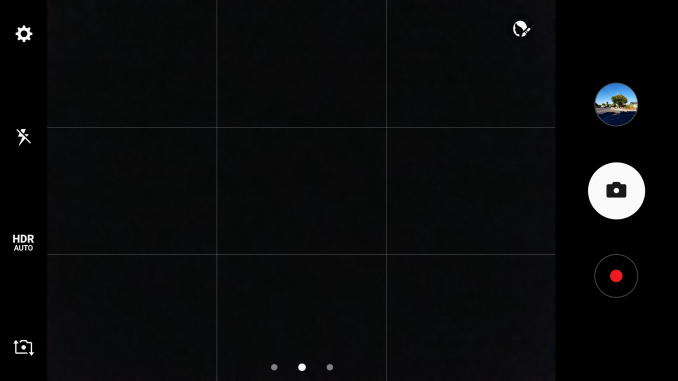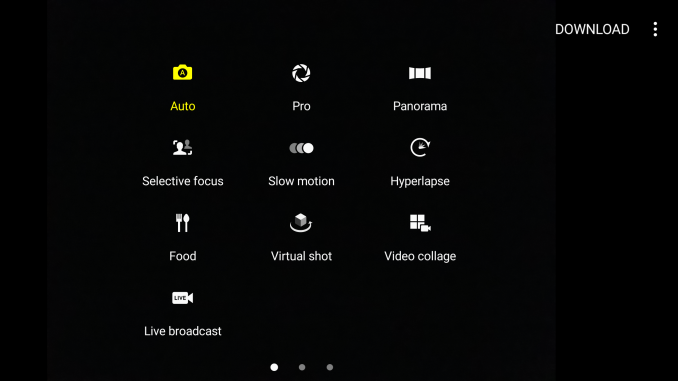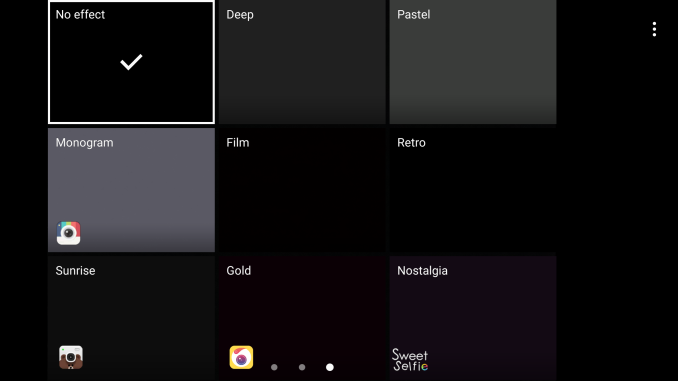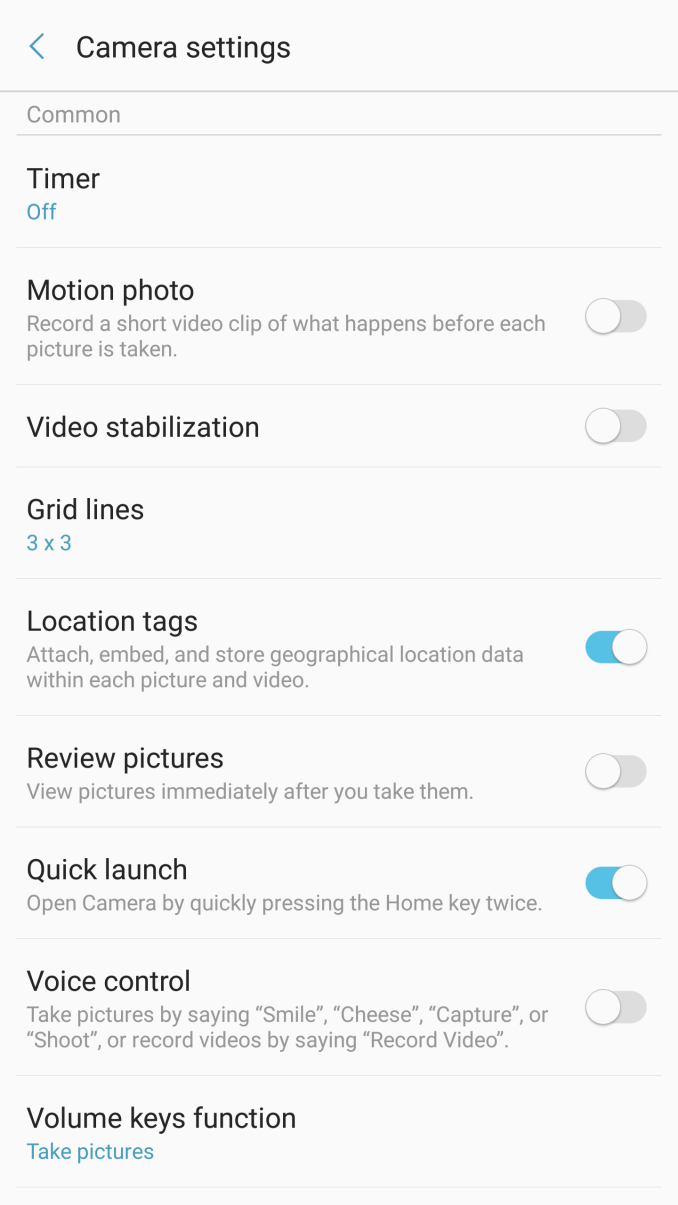The Samsung Galaxy Note7 (S820) Review
by Joshua Ho on August 16, 2016 9:00 AM ESTCamera Architecture
In general, camera has become probably the single biggest point of differentiation between smartphones at this point. As smartphones are often the only camera that most people carry on a day to day basis, the rear camera on a smartphone really cannot be a disappointment relative to the competition. While we can talk about how much a front-facing camera matters in terms of quality, it’s pretty safe to say that for photos and videos that are worth saving will be taken with the rear-facing camera.
While post-processing and a number of other factors are going to have a huge impact on the overall camera experience, the foundation that makes it possible to deliver a great camera is always going to start at the hardware.
| Samsung Galaxy Note Cameras | ||||
| Galaxy S6 Galaxy Note5 |
Galaxy S7 Galaxy Note7 |
|||
| Front Camera | 5.0MP | 5.0MP | ||
| Front Camera - Sensor | Samsung S5K4E6 (1.34 µm, 1/4") |
Samsung S5K4E6 (1.34 µm, 1/4") |
||
| Front Camera - Focal Length | 2.2mm (22mm eff) | 2.1mm (21mm eff) | ||
| Front Camera - Max Aperture | F/1.9 | F/1.7 | ||
| Rear Camera | 16MP | 12MP | ||
| Rear Camera - Sensor | Sony IMX240 Samsung S5K2P2 (1.12 µm, 1/2.6") |
Sony IMX260 Samsung S5K2L1 (1.4 µm, 1/2.6") |
||
| Rear Camera - Focal Length | 4.3mm (28mm eff) | 4.2mm (26mm eff) | ||
| Rear Camera - Max Aperture | F/1.9 | F/1.7 | ||
It’s probably not any surprise that the Galaxy Note7 has the same exact camera setup as the Galaxy S7, but in case it was ever in doubt it shouldn’t be now. Given the similar camera setup I don’t think that there’s a ton of difference to be expected between the two phones but things like software algorithms can and do change with time so it’s important to not just immediately write off the Galaxy Note7 or assume it’s immediately going to be award-winning. It’s worth reiterating here that the dual pixel system likely incurs a sensitivity penalty as in order to implement the dual pixel system each pixel must have a physical light barrier as you need a microlens and a barrier to make light from the same object converge on two separate photodiodes so the amount of light collected is inherently going to be less than no barrier and a single photodiode per pixel. I’m also curious to know whether any quantum effects appreciably change sensitivity here as if a single pixel is a 1.4 micron square then each photodiode has area similar to a 1-micron pixel. With that said we can move on to the one major change highlighted by Samsung, namely the user experience.
Camera UX
One of the major points highlighted in the launch event was that the camera application was completely redesigned. In addition to a fairly subdued icon that better fits the color palette for Android in general, the UI itself is a bit cleaner out of the box.
Right away when you open the camera app the most apparent thing is that the number of icons has been reduced. Instead of a dedicated mode button it’s now a swipe, and the same is true of the effects button. There’s also no more timer or resolution button on the screen by default, and the button to hide the various settings buttons has been eliminated entirely. It’s also worth mentioning that the button to change between cameras has been moved and a gesture to do the same thing has been added so you can simply swipe up or down to switch between cameras. Samsung also continues to shut off the camera after a few minutes automatically which is good if you’re a normal user but annoying if you’re trying to set up a shot of an ISO chart with a tripod.
Other than these changes almost nothing else really changes. There are some extra toggles like shape correction in the settings overflow and RAW output is now hidden under Picture Size for the rear camera but nothing else is really notable. I don’t really have anything else to say here that’s new, and I would refer to the Galaxy S7 Part 2 review if you are otherwise unfamiliar with Samsung’s camera application. As both perform identically as far as focus and capture speed goes subjectively we’ll temporarily forgo these results in favor of timeliness for this review.















202 Comments
View All Comments
thunderwave_2 - Thursday, August 18, 2016 - link
Look at the S7 Exynos stock browser results. Yes, the iPhone 6s still outperforms it, but it isn't exactly "wiping the floor" with it.Also, consider that although the onscreen benchmarks seem to be in its favour, the S7 is rendering almost 4 times the pixels. While the Mali T880/Adreno 530 is ahead though, the iPhone 6s does admittedly have superior sustained performance.
iOS runs less background processes and is less resource intensive than Android, leading to the great battery figures.
trparky - Saturday, August 20, 2016 - link
Which tells me that Samsung didn't equip the device with a strong enough GPU to push the amount of pixels and sustain high frame rates. If you ask me, there's no reason why that device should have such a high pixel count. Once you go past a certain point it becomes nothing but bragging rights.As for iOS running less background processes, that's a good thing. Yeah, Android is pretty bloated under the hood. And then you throw Samsung's garbage on top and you make it even worse. Android's not nearly as optimized as iOS is.
slyronit - Tuesday, August 23, 2016 - link
The device has a high pixel count because it uses a Pentile display, so the effective resolution is always less than advertised. A Pentile 1080p on such a big screen would look like crap.lilmoe - Tuesday, August 16, 2016 - link
It was surpassed in performance and efficiency a long time ago, by the Exynos 7420... The 8890 widened the gap further.I know you guys want to believe that Apple's chips are the best. I feel your pain. But it's not, no matter how many "reviewers" preach browser benchmarks. Geekbench is by no means a legit benchmark. lol.
Even on the GPU side, the PowerVR has long been surpassed.
Stop blaming Google's shortcomings on Samsung, Qualcom and others. Google's _services_ are great, but their software and optimization level is absolute brown stuff. Samsung, LG and everyone else has to literally fix Android before releasing a phone/update...
CloudWiz - Tuesday, August 16, 2016 - link
Performance...only in multi-threaded benchmarks. Twister absolutely destroys A57 in any single-threaded benchmark and since for the vast majority of use cases (i.e. web browsing) the OS only uses one core, the overall user experience is so much better with the A9. Mongoose is catching up but still not at Twister's level.As for efficiency, the modem on the S6 makes it last a ridiculously short amount of time on LTE and even on Wifi the 6s lasts half an hour longer with a battery two-thirds the size of the S6. The 6s Plus lasts a full 2 hours longer with a similar size battery.
The GT7600 was only beaten in GFXBench this year by the Adreno 530 and surpasses both Adreno 530 and the T880MP12 in Basemark (it also has equal performance to the T880 in Manhattan). You make it sound like the GT7600 is multiple generations behind while it is not. It absolutely crushes the Adreno 430 and the T760MP8 in the Exynos 7420. The GX6450 in the A8 was underpowered but the GT7600 is not.
I do hope that at some point Apple adds two Cortex-A53s to help with low power tasks, but given that their dual-core design already achieves insanely good performance (with the A10 seeking to equal the performance of A9X in a mobile device), they might not even need to.
lilmoe - Tuesday, August 16, 2016 - link
"and since for the vast majority of use cases (i.e. web browsing) the OS only uses one core"False. On Android, the vast majority of applications take full advantage of 4 or more cores.
"As for efficiency, the modem on the S6 makes it last a ridiculously short amount of time on LTE and even on Wifi the 6s lasts half an hour longer with a battery two-thirds the size of the S6. The 6s Plus lasts a full 2 hours longer with a similar size battery."
Also, false. As proven by personal experience, with good reception, the modem on the modern Exynos chips can be more efficient than WiFi. What you're seeing in the charts, my friend, is that Safair (or any browser for the matter), is more efficient that Chrome (shocker). What you're also seeing is that, 720p and 1080p are more battery friendly than 1440p (another shocker). It's amazing that the GS6/GS7 can keep up with that much overhead and more pixels to push.
osxandwindows - Wednesday, August 17, 2016 - link
Not really, those cores are waisted cores.The scheduler sucks, therefore making android inefficient overall when it comes to the use of multiple cores.
thunderwave_2 - Thursday, August 18, 2016 - link
http://www.anandtech.com/show/9518/the-mobile-cpu-...This piece shows that, on the S6 at least, not all of those cores go to waste.
osxandwindows - Thursday, August 18, 2016 - link
Nope, you don't get it.osxandwindows - Thursday, August 18, 2016 - link
I'm not saying it can't use them, I'm saying it can't use them an a way that doesn't affect performance or battery life.